Idea by
Alessandra Araujo
GCP Arquitetura & Urbanismo
Call for ideas 2017
Architecture inspired by Nature
Architecture inspired by Nature
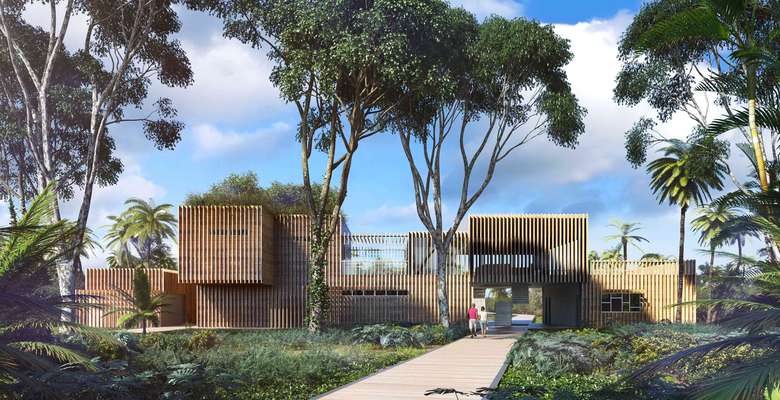
The Votu Hotel was designed to achieve high performance on thermal comfort. It is located at Bahia, Brazil with an annual temperature average of 750F and high humidity rate. The project was developed using Biomimicry.
The bungalows have constant air renovation inspired on prairie dog, whose caves are below ground with airflow system following Bernoulli Principle. The design created a barrier to decrease the airflow velocity with the guardrail adjacent to the concrete structure that has the ventilation holes. The air continuous to flow through the tubes inside this structure and exits freely throughout the louvers on the top of the wall.
The bungalow shell was inspired on Saguaro cactus performing self-shading structures.
The kitchen roof was inspired on toucan peak to exchange heat. Inspired on this thermal radiator system, the kitchen roof exchanges heat within a layer of soil shaded by a roof garden in a capillary cooper pipe system with mechanical air flow.

The design had several issues to solve and the ventilation system was the fundamental one, since the main objective was to minimize the usage of air conditioning and electricity consumption while bringing thermal comfort for the buildings.

The thermal mass, corresponding to the soil for the prairie dog burrows, is obtained with the concrete structure and roof garden. This concrete structure is a multifunctional design element, since its bottom part works as the toilet walls and its upper part becomes the roof structure as it expands.
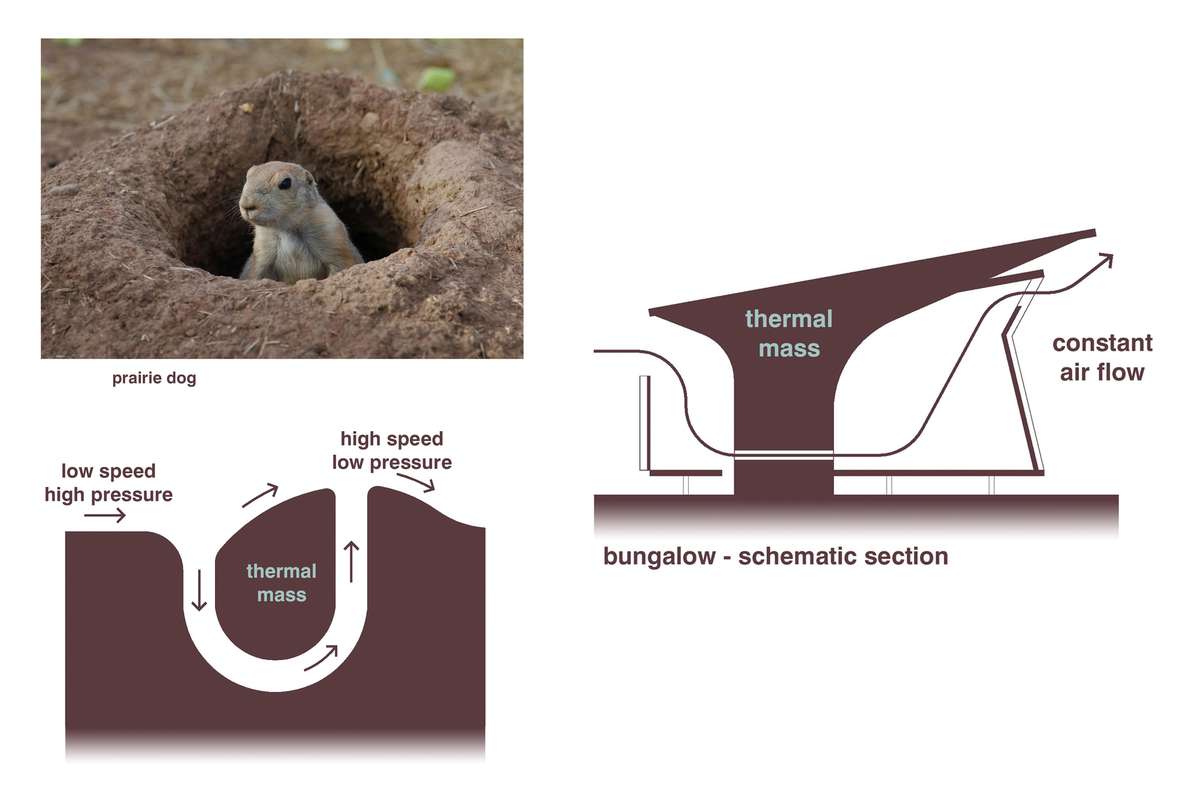
Bernoulli’s Principle states that an increase in the speed of a fluid occurs simultaneously with a decrease in pressure or a decrease in the fluid's potential energy.
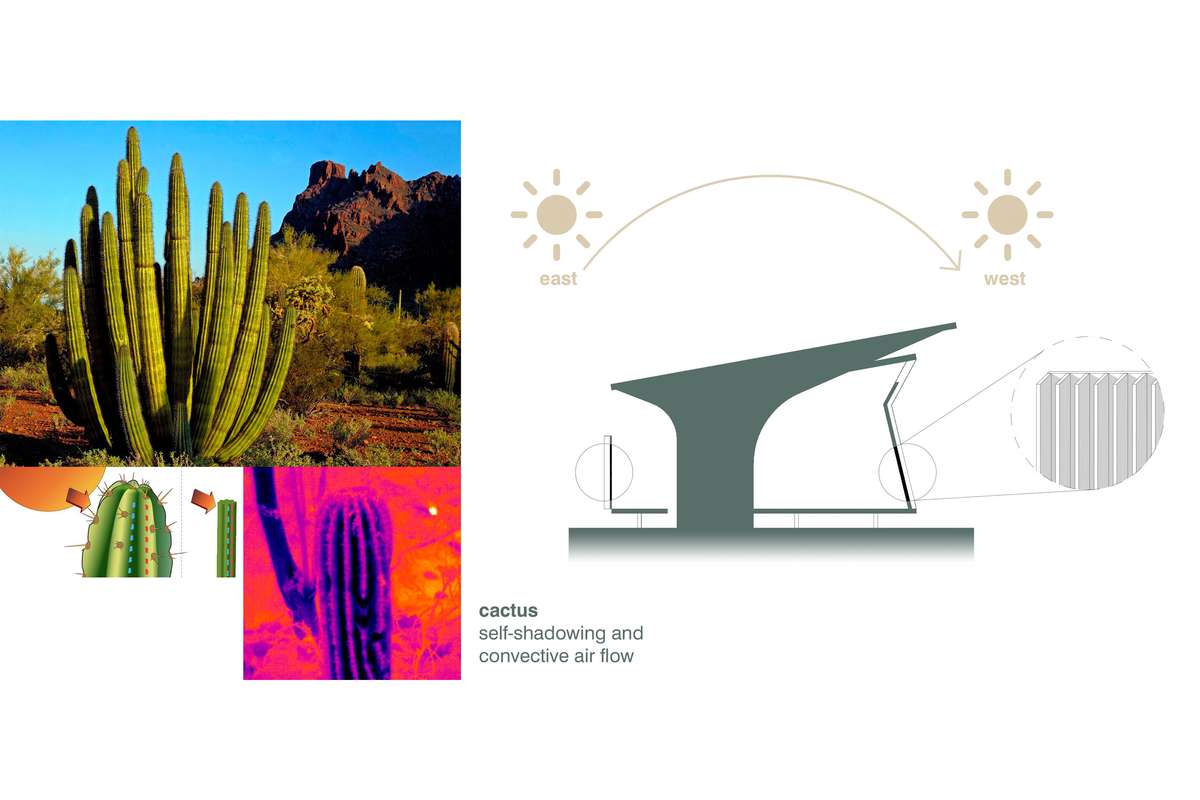
The scheme demonstrates the thermal convection between the hot and cooler air. The shape of the cactus allows always shade in one of the sides. The shaded side has cooler air comparing to the one exposed to the sun. This gradient on temperature promotes air circulation allowing air renewal at the facade and minimizing heat absorption.
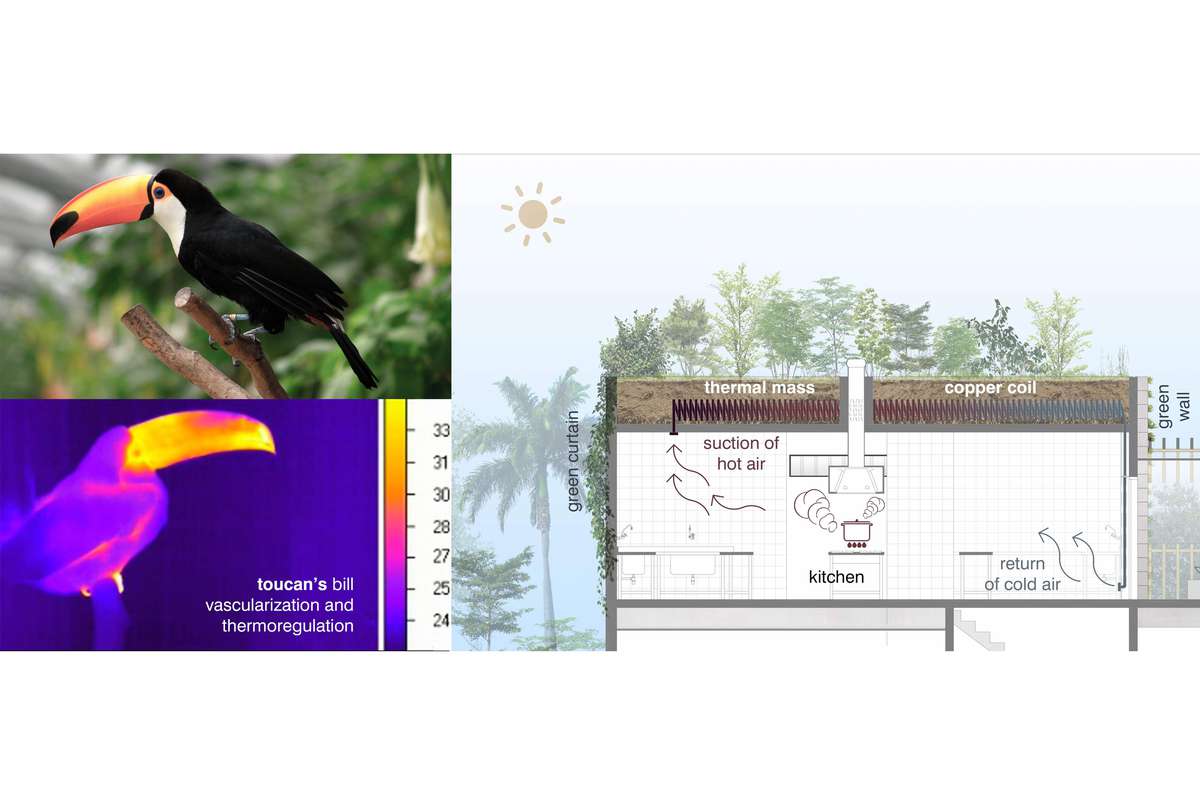
The specie Ramphastos toco, known as toco toucan lives on canopy of the Tropical Rainforest, where they receive a lot of heat during the day and often have cooler nights. A very good thermal exchange system is required to regulate temperature. Heat loss from the peak is highly variable, and depending on air speed could account for as little as 25% (minimum) to as much as 400% (maximum) of resting heat production in adults, the largest reported for an animal
Architecture inspired by Nature
Architecture inspired by Nature

The Votu Hotel was designed to achieve high performance on thermal comfort. It is located at Bahia, Brazil with an annual temperature average of 750F and high humidity rate. The project was developed using Biomimicry.
The bungalows have constant air renovation inspired on prairie dog, whose caves are below ground with airflow system following Bernoulli Principle. The design created a barrier to decrease the airflow velocity with the guardrail adjacent to the concrete structure that has the ventilation holes. The air continuous to flow through the tubes inside this structure and exits freely throughout the louvers on the top of the wall.
The bungalow shell was inspired on Saguaro cactus performing self-shading structures.
The kitchen roof was inspired on toucan peak to exchange heat. Inspired on this thermal radiator system, the kitchen roof exchanges heat within a layer of soil shaded by a roof garden in a capillary cooper pipe system with mechanical air flow.
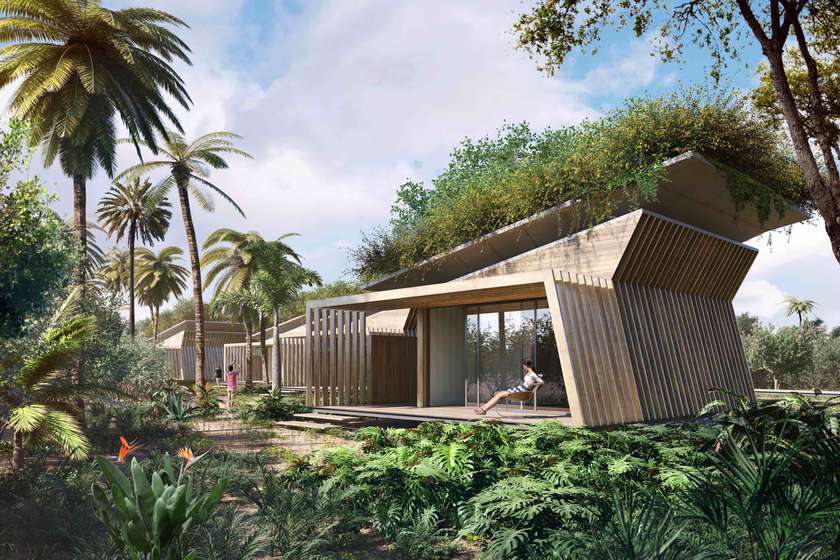
The design had several issues to solve and the ventilation system was the fundamental one, since the main objective was to minimize the usage of air conditioning and electricity consumption while bringing thermal comfort for the buildings.
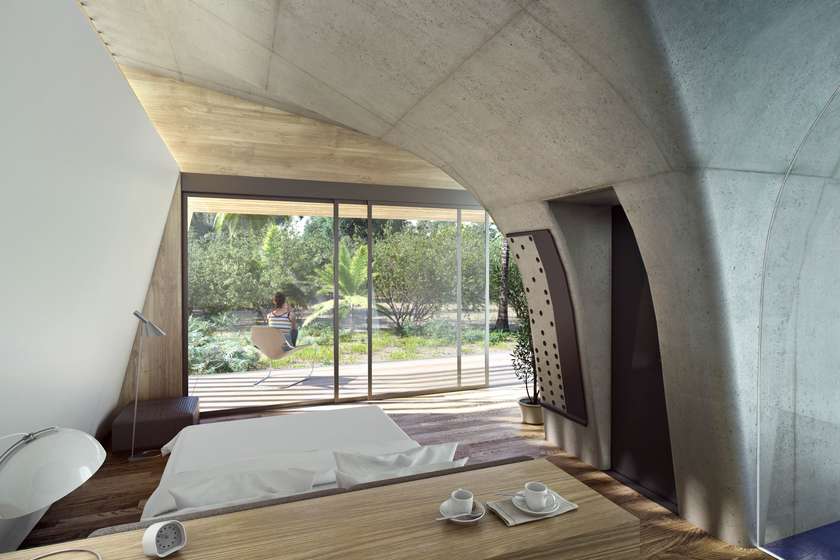
The thermal mass, corresponding to the soil for the prairie dog burrows, is obtained with the concrete structure and roof garden. This concrete structure is a multifunctional design element, since its bottom part works as the toilet walls and its upper part becomes the roof structure as it expands.
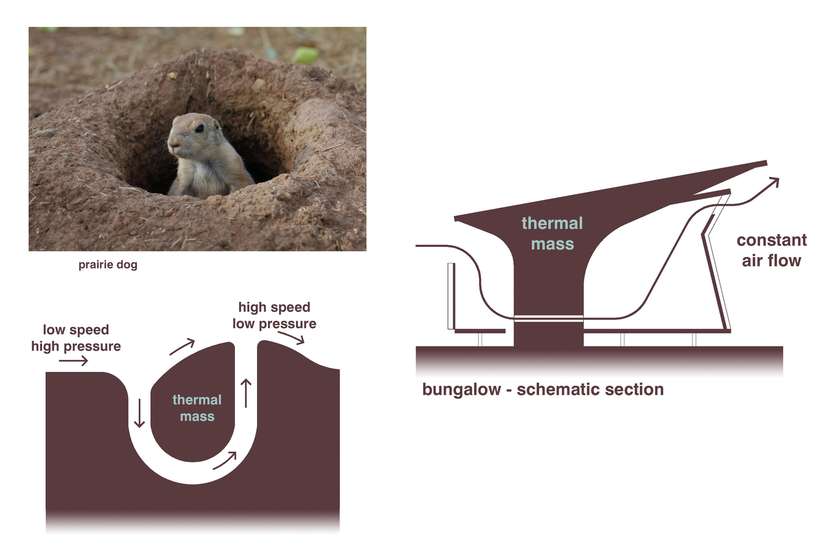
Bernoulli’s Principle states that an increase in the speed of a fluid occurs simultaneously with a decrease in pressure or a decrease in the fluid's potential energy.
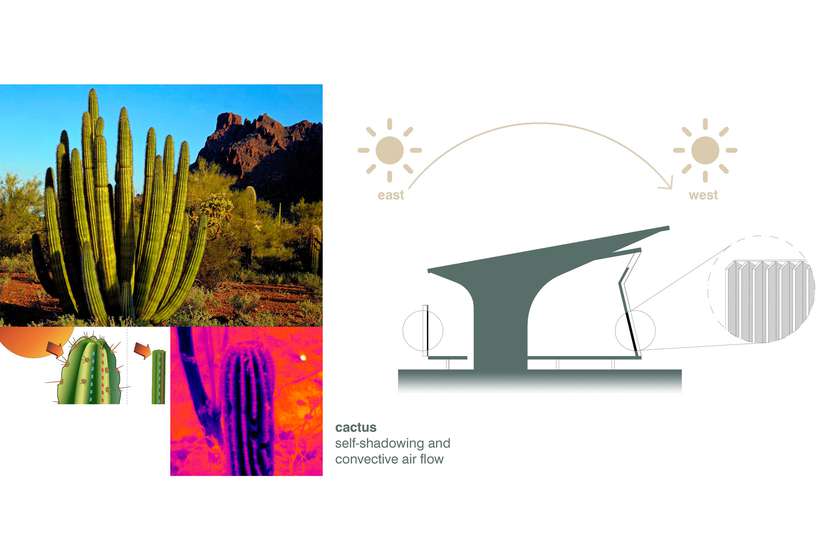
The scheme demonstrates the thermal convection between the hot and cooler air. The shape of the cactus allows always shade in one of the sides. The shaded side has cooler air comparing to the one exposed to the sun. This gradient on temperature promotes air circulation allowing air renewal at the facade and minimizing heat absorption.
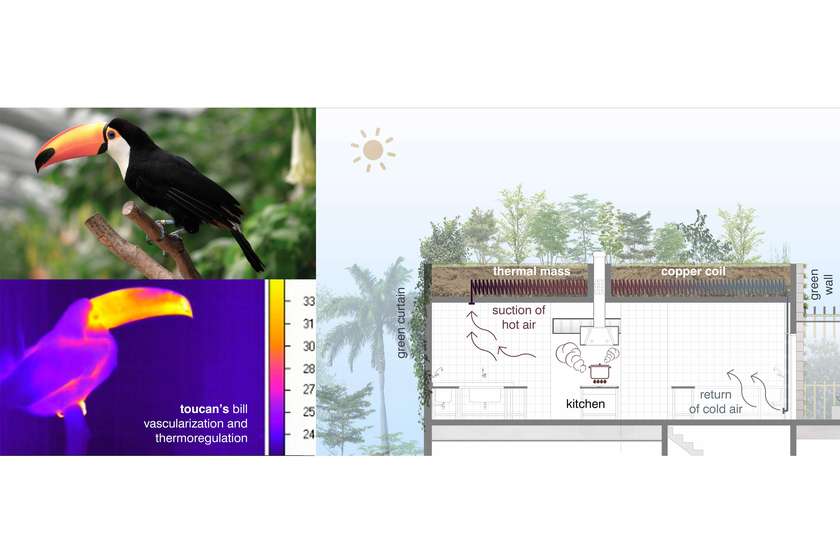
The specie Ramphastos toco, known as toco toucan lives on canopy of the Tropical Rainforest, where they receive a lot of heat during the day and often have cooler nights. A very good thermal exchange system is required to regulate temperature. Heat loss from the peak is highly variable, and depending on air speed could account for as little as 25% (minimum) to as much as 400% (maximum) of resting heat production in adults, the largest reported for an animal